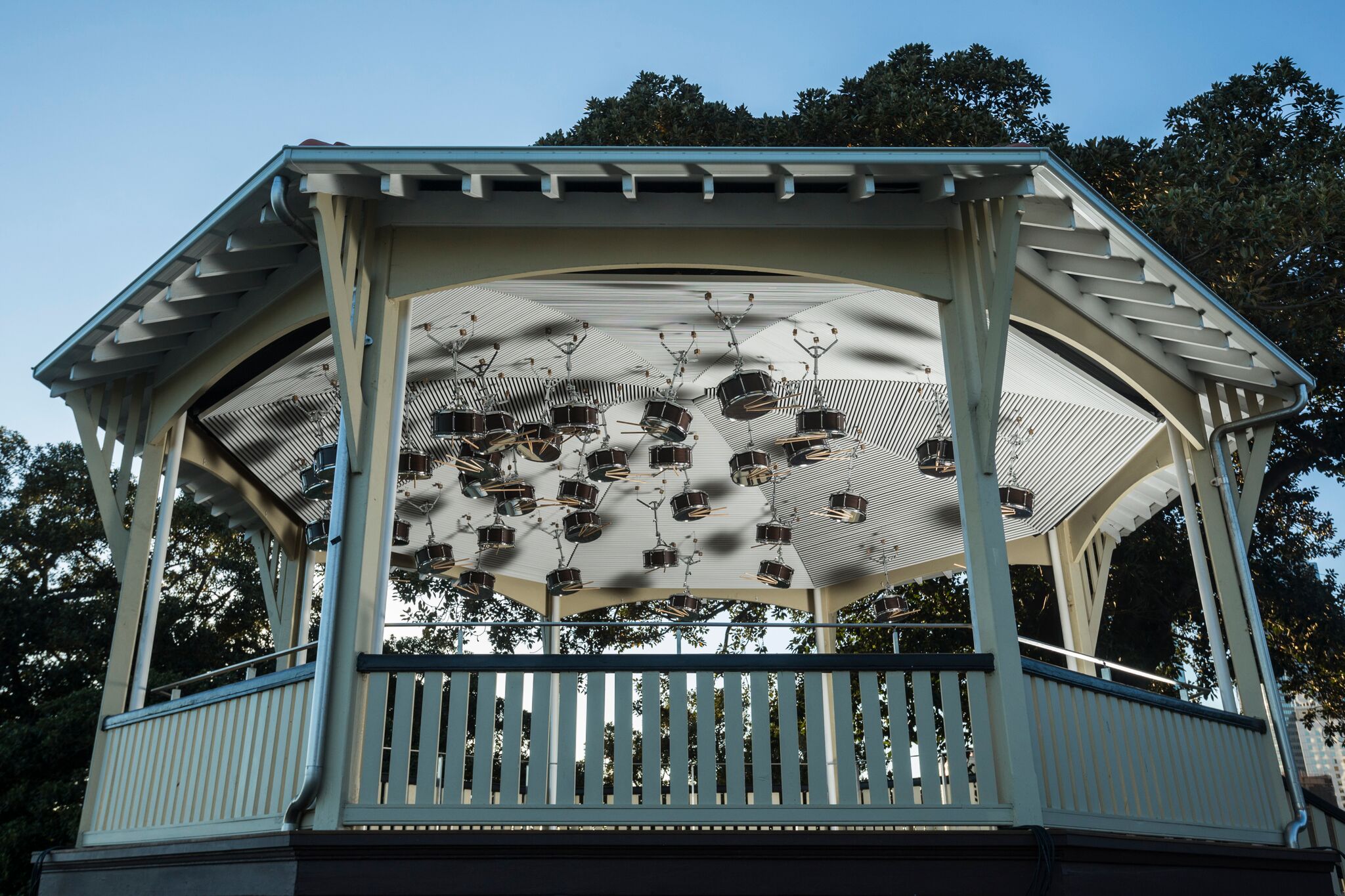Anri Sala - The Last Resort
/
Albanian born, French artist Anri Sala will premiere a new sound and sculptural installation for the 33rd Kaldor Public Art Project, to be presented free to the public from 13 October until 5 November 2017.
Representing the first time the artist has presented a major new work in Australia, Sala’s installation, titled The Last Resort, will have its world premiere in Sydney at the Observatory Hill Rotunda.
Photo © Peter Greig
The Last Resort was conceived as site-specific installation for Kaldor Public Art Projects in an outdoor pavilion for a location overlooking the Sydney harbor. The open structure houses 38 especially constructed snare drums, suspended from the ceiling in an up-side down position.
The ensemble of drums is a self-playing sculpture. Each of the drums is custom-made and conceals two in-built speakers: a low range speaker whose low frequencies incite vibrations on the drum skin, triggering in return the response of the drumsticks that create the characteristic rat-a-tat, and a high- and midrange speaker that plays audible musical fragments. The snare drums also function as visible markers of the sound of the installation.
The musical starting point of The Last Resort is the Clarinet concerto in A major, K. 622, composed by Wolfgang Amadeus Mozart in 1791, shortly before his death. Only a couple of years earlier, the First Fleet had landed in Australia reaching Botany Bay on January 18, 1788. The space hosting the installation of The Last Resort is a rotunda situated in a public garden on the highest hill overlooking the settlement of Sydney. This area was the site of Fort Phillip built in 1800 and named after the colony’s first Governor. It is thought to have been a popular lookout spot for the Aboriginal people. For this reason the site is also associated with the first contact between the two culture previously unaware of one another.
The snare drums are animated by the Mozart’s Clarinet concerto, in a recording that Sala rearranged according to specific conditions. Each of the three movements of the concerto was altered according to a self-imposed rule: from the first central tones (A, C sharp, and E) were removed, in the second all original tempo indications were replaced by the daily wind description from James Bell’s 1839 journal of his sea crossing from London to Australia, whereas in the third movement the chronological order of all solo and tutti parts was altered.
The musicians playing the individual parts in the rearranged scores was recorded simultaneously with separate mikes. The distribution of the recorded parts among the drums is loosely based on the typical seating formation of a classical orchestra. Thus the ensemble of drums will be positioned in accordance with the typical seating formation of an orchestra. The individual parts in Mozart’s rearranged score will be assigned to the corresponding snare drums.
The Last Resort transforms W. A. Mozart’s famous work using several self-imposed strategies in order demonstrate the change it may have undergone travelling to Australia. Subverting the concerto’s main features, its sense of gravity and pace, Sala’s work produces the perception of a concert that has travelled a long distance, endured the high seas of journey, that has, in the artist’s words, “weathered it.” The upside-down placement of the drums suspended from the ceiling playfully alludes to the notion of Australia as a country “down under.” At the same time, it also recalls the indigenous flying foxes hanging upside down from outstretched tree branches.
The Last Resort addresses the historical and cultural specificity of cultural artifacts (among which Sala counts musical works), focusing on a critical period of simultaneous events and accomplishments in which Enlightenment – embodying the ideas of progress, rational acquisition, as well as organization of knowledge – intrinsically interwove with Colonialism.
Commenting on his work for the 33rd Kaldor Public Art Project, Anri Sala said: “I look at this work like a musical artefact that we have thrown in the ocean … the winds, the waves, the water currents take it one way and the other and it eventually reaches somewhere, though not as it originally started out as it is transformed by the journey."





















